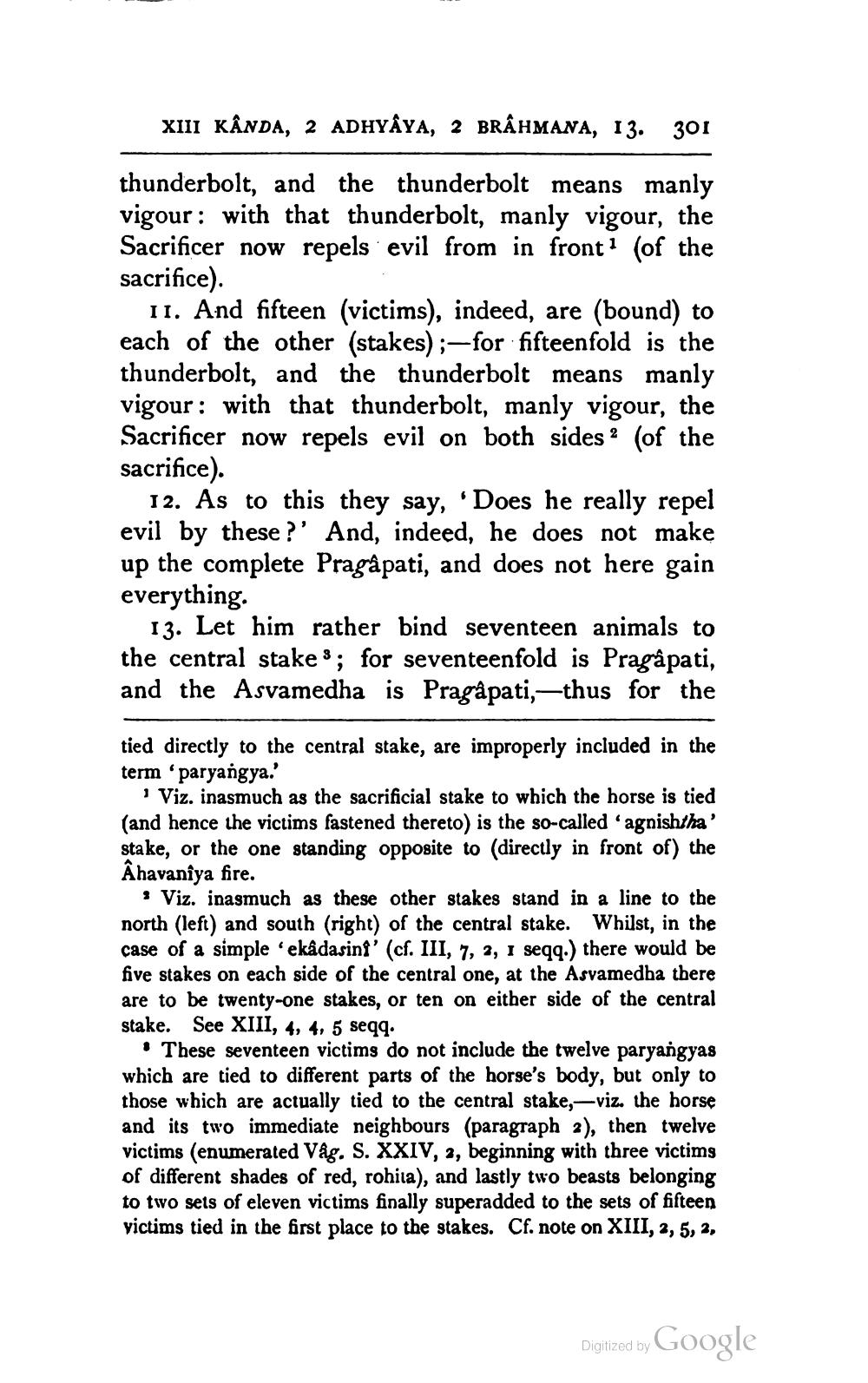________________
XIII KÂNDA, 2 ADHYAYA, 2 BRÂHMANA, 13. 301
thunderbolt, and the thunderbolt means manly vigour with that thunderbolt, manly vigour, the Sacrificer now repels evil from in front1 (of the sacrifice).
II. And fifteen (victims), indeed, are (bound) to each of the other (stakes);-for fifteenfold is the thunderbolt, and the thunderbolt means manly vigour with that thunderbolt, manly vigour, the Sacrificer now repels evil on both sides (of the sacrifice).
12. As to this they say, 'Does he really repel evil by these?' And, indeed, he does not make up the complete Pragâpati, and does not here gain everything.
13. Let him rather bind seventeen animals to the central stake; for seventeenfold is Pragâpati, and the Asvamedha is Pragâpati,-thus for the
tied directly to the central stake, are improperly included in the term 'paryangya.'
' Viz. inasmuch as the sacrificial stake to which the horse is tied (and hence the victims fastened thereto) is the so-called 'agnishtha' stake, or the one standing opposite to (directly in front of) the Âhavanîya fire.
Viz. inasmuch as these other stakes stand in a line to the north (left) and south (right) of the central stake. Whilst, in the case of a simple 'ekâdasin?' (cf. III, 7, 2, 1 seqq.) there would be five stakes on each side of the central one, at the Asvamedha there are to be twenty-one stakes, or ten on either side of the central stake. See XIII, 4, 4, 5 seqq.
• These seventeen victims do not include the twelve paryangyas which are tied to different parts of the horse's body, but only to those which are actually tied to the central stake,-viz. the horse and its two immediate neighbours (paragraph 2), then twelve victims (enumerated Våg. S. XXIV, a, beginning with three victims of different shades of red, rohita), and lastly two beasts belonging to two sets of eleven victims finally superadded to the sets of fifteen victims tied in the first place to the stakes. Cf. note on XIII, 2, 5, 2,
Digitized by
Google




